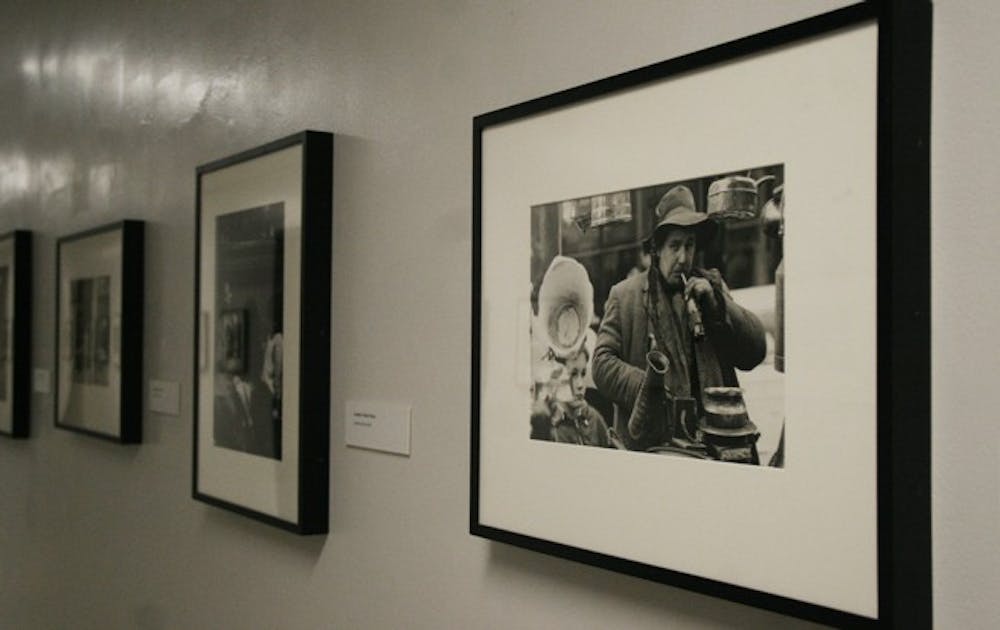I’ve been walking past the photo exhibits in the long hallway in Perkins Library for a while. Right now, the exhibit features a photographer named Ronald Reis. It’s hard to find information about him even with a Google search, but it’s clear that most of the works exhibited are photos that Reis took in urban settings during the 1960s. It’s a time period when Diane Arbus and Garry Winogrand were also documenting everyday city life.
Ronald Reis is rarely heavy-handed. His photographs resemble frozen aquariums of city life. There is a group of teenagers beside a fountain. A child blows a balloon on the sidewalk in the summer. Men sit. Women chatter outside the beauty shop.
His photographs rarely spark ideas—and I mean that as praise. They allow me an occasion to feel all of the small pleasures of staring. I am watching people without the fear of eye contact. I know nobody. There are no distractions of movement. Four men on a ledge stare at heavy iron bocce balls as if celestial orbs. A girl at a flea market is overwhelmed by the size of tires.
Reis depicts liminal figures and he depicts businessmen. Protestors sit cross-legged in an oblong circle. A mob of suited men look in the opposite direction. Nobody has won any of the stuffed animals at the amusement park. A man has lit a match. Astonished, he cranes his neck slightly forward, as if reading a menu, to smell the flame.
Many of the photographs are dominated by black. They are all black and white. The whites are sharp, too: the dress of a woman whose pose makes her appear naked. Walking down the hallway of Perkins late at night, they all mind their own business. It feels as if I’m aiming down the aisle of an airplane, free to eye the passengers at ease.
I wonder how it feels to follow Reis around cities. I wonder what paths he takes around New York. Who he knows of the women he’s photographed. The placard at the beginning of the hallway mentions something about the extraordinariness of the ordinary. I’m hesitant to agree. More appropriate terms are balanced and still. I’m not sure I understand anything new about the world.
The Perkins hallway is a peculiar space. The lights are sharp, rectangular and out of focus. The dotted white tiles of the drop-down ceiling seem like confetti about to rain on New York.
He has gone to London and to Athens and to New Haven and to all five boroughs. The shots never feel imposed. They feel like candids whether they are or not. In today’s world of too many photos of too many things, these photos feel unashamed.
It feels foolish to talk in abstract terms because there is little abstract here. Reis allows room for story-making, though he doesn’t tell stories. They are meditative tools. The cities seem old. Black and white has an obvious nostalgia.
A philosopher named Arthur Schopenhauer once said, “Boredom is just the reverse side of fascination: both depend on being outside rather than inside a situation, and one leads to the other.” Many of Reis’s photos prove him right.
Street Exposure: The Photographs of Ronald Reis are on exhibit in the Perkins Library Photography Gallery until May 18.
Get The Chronicle straight to your inbox
Signup for our weekly newsletter. Cancel at any time.

